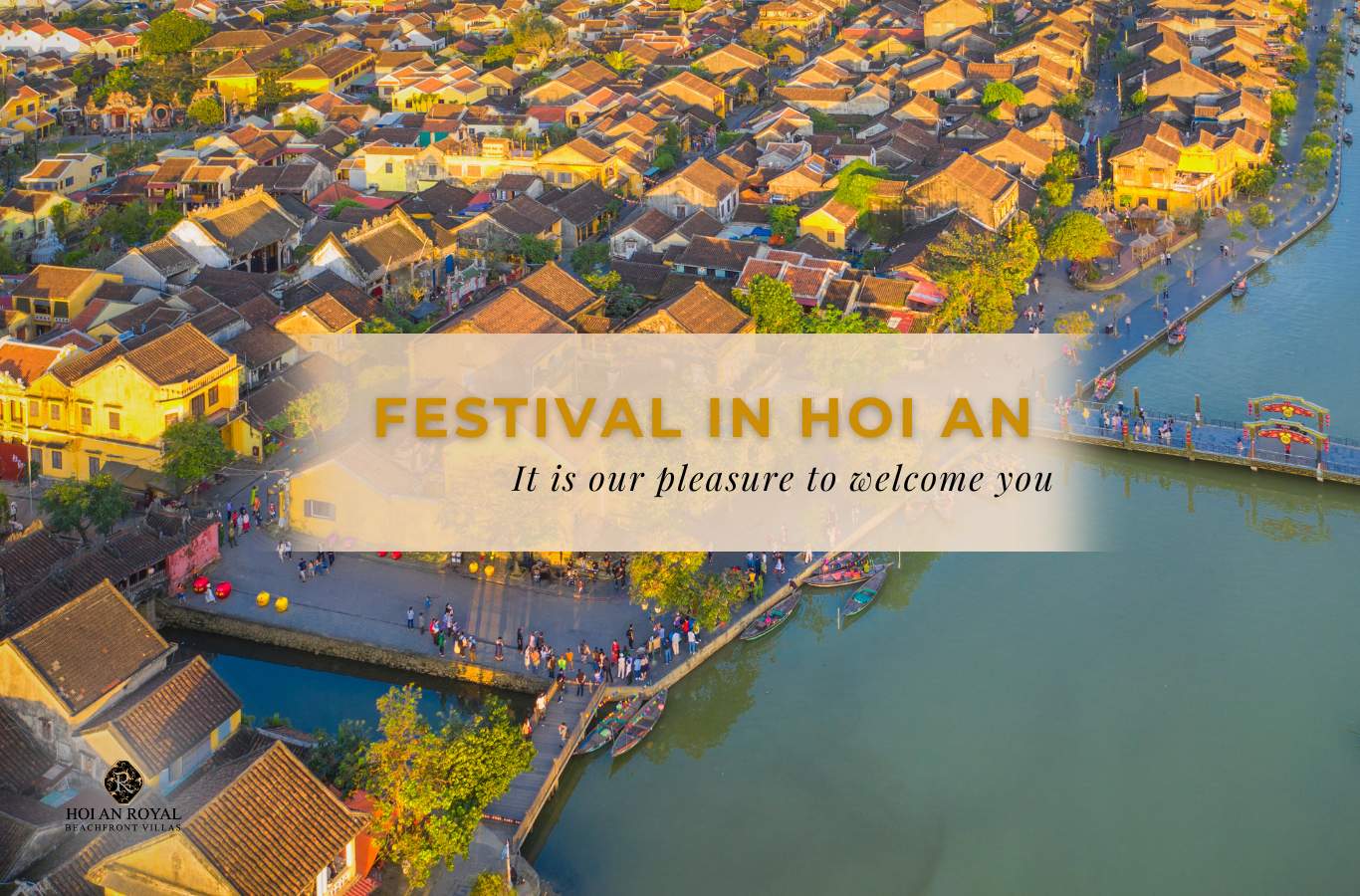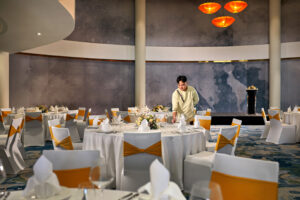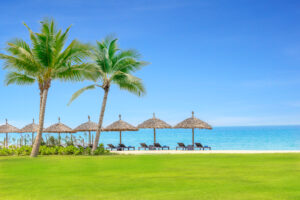Festivals in Hoi An are always a highlight that attracts both domestic and international tourists. Not only deeply reflecting the nation’s cultural identity, each festival offers unique and unforgettable experiences. Below are the most outstanding festivals that Hoi An Royal Beachfront Villas wants to introduce so you won’t miss them when visiting the ancient town.
Table of Contents
ToggleTop 10 Festivals in Hoi An You Should Experience at Least Once
Hoi An Lantern Festival
The Lantern Festival, also known as the Hoi An Lantern Festival, takes place on the 14th day of each lunar month, especially during the Vietnamese Lunar New Year and Mid-Autumn Festival. Every night at 6 PM, when the street lights are turned off, colorful lanterns illuminate the ancient streets, creating a magical and enchanting atmosphere.
This festival not only preserves Hoi An’s traditional culture but also symbolizes prayers for peace and luck for each family. Lanterns represent light, blessings, and hope for a bright future.
Main activities during the festival:
- Releasing lanterns on the Hoai River: Visitors can purchase lanterns to float on the Hoai River, offering prayers for peace and happiness to their families and loved ones. Lantern prices range from 5,000 to 20,000 VND.
- Traditional art performances: Shows such as lion dance, water puppetry, martial arts, and Bai Choi singing add a lively and unique atmosphere to the festival.
- Specialty cuisine: Traditional Hoi An dishes like Cao Lau, Mi Quang, Banh Bao, and Banh Vac are served throughout the festival.
Hoi An lantern festival takes place along the Hoai River, especially between the Japanese Bridge and Hoi An Bridge, where the atmosphere is most vibrant.

Fisherman’s Festival
The Fisherman’s Festival is held on the full moon or the first day of the lunar month at the beginning of the year, or at the start of the fishing season. This festival prays for a bountiful fishing season, calm seas, and is also a time for fishermen to thank the sea gods and pray for safety and happiness.
Main activities include:
- Ceremonial offerings to worship the sea god and fish god, praying for peace and bountiful harvests.
- Parading decorated basket boats, fishing boats, and large boats on the sea or river.
- Folk cultural activities such as lion dancing, Bai Choi singing, and traditional boat racing.
- Releasing fish for blessings and lanterns on the sea or river to pray for luck and peace.
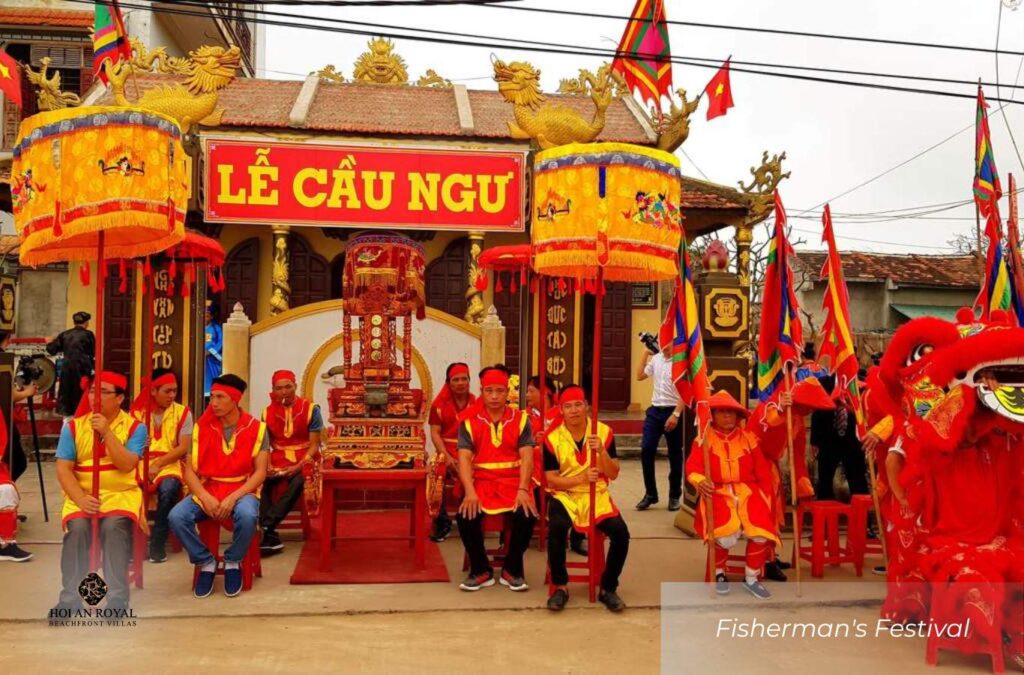
Pyramidal Sticky Rice Cake Festival
The Pyramidal Sticky Rice Cake Festival is celebrated on the 5th day of the 5th lunar month, also known as Tet Doan Ngo, one of the important traditional Vietnamese festivals. It is a time for people to offer ancestral worship, pray for health, ward off pests and diseases, and welcome a bountiful harvest.
Meaning and customs:
- Tet Doan Ngo is associated with eating tro cakes (banh tro), made from glutinous rice soaked in ash water, symbolizing the cooling and detoxification of the body during summer.
- Besides the cake, people also eat fruits like plums and lychees to “kill pests” inside the body, according to folk belief.
- Ancestral worship and traditional rituals are solemnly performed to pray for health and peace for families and the community.
The festival reflects agricultural culture, folk beliefs, and community bonding in Vietnamese life.
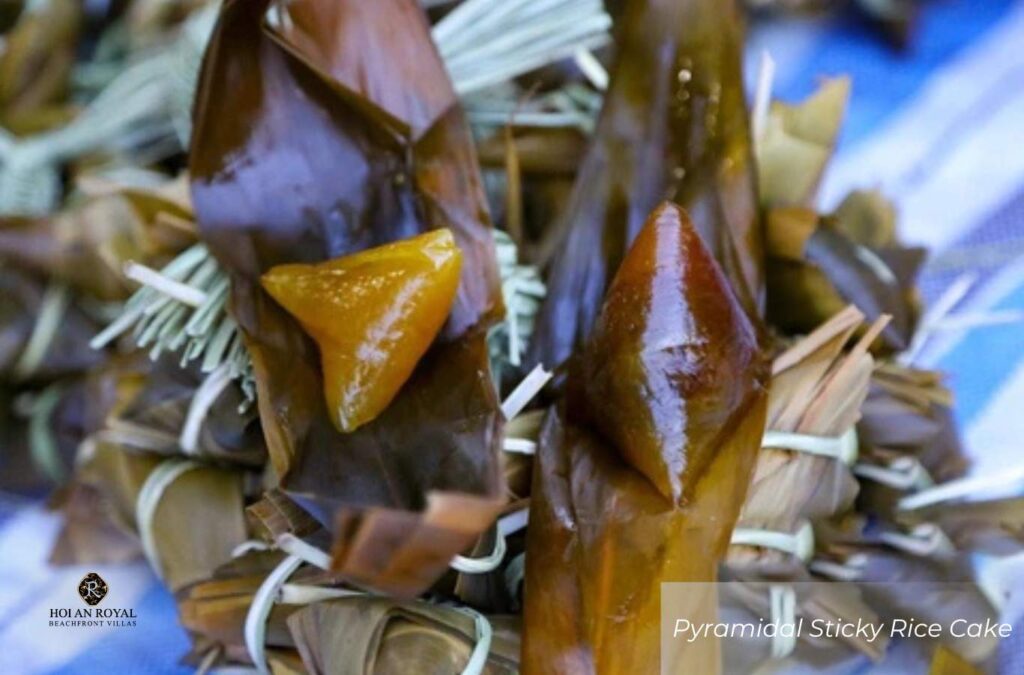
Mid-Autumn Festival (Tet Trung Thu)
Mid-Autumn Festival, also called Moon Festival or Lantern Festival, is celebrated on the 15th day of the 8th lunar month every year. It is one of Vietnam’s important traditional festivals with over 3,000 years of history.
Tet Trung Thu symbolizes family reunion, togetherness, and a bountiful autumn harvest. The festival is also linked to legends about Hang Nga and Chu Cuoi.
Activities during Tet Trung Thu:
- Children receive lanterns in various shapes such as star lanterns, soldier lanterns, masks, and join lantern parades, lion dances, and dragon dances.
- Adults prepare offerings including mooncakes (both baked and sticky rice varieties with mixed or traditional fillings), fruits, tea, and wine to worship and enjoy the full moon.
- Traditional folk games like tug-of-war, bamboo pole catching, and drum singing contests are also organized.
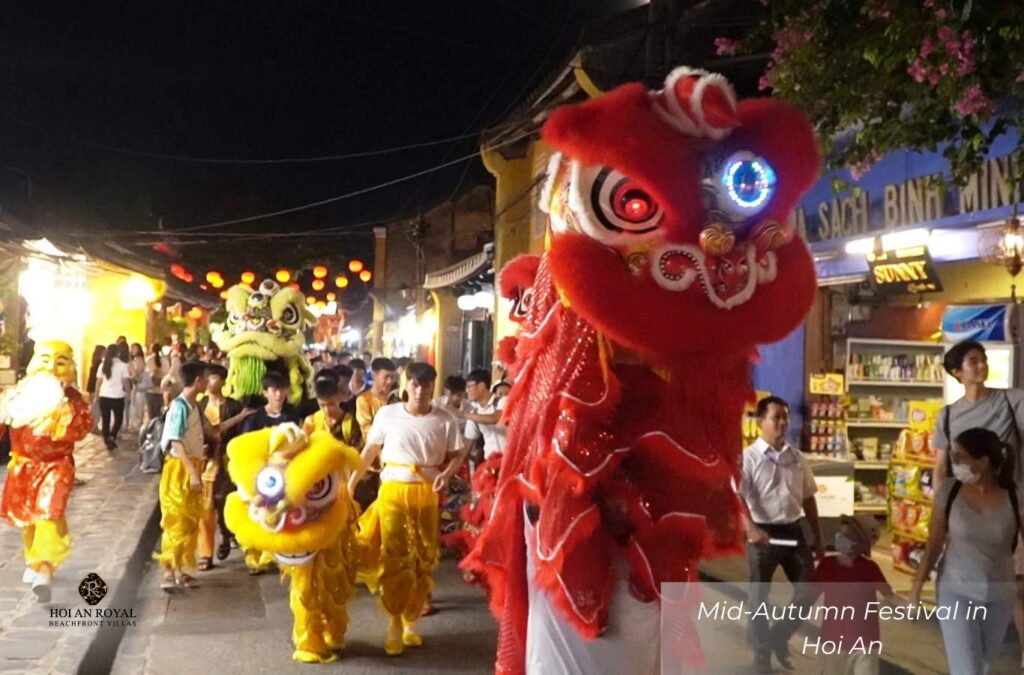
Ba Thu Bon Festival
Ba Thu Bon Festival is a traditional folk festival of the people living along the Thu Bon River in Quang Nam province, held annually from the 10th to 12th day of the 2nd lunar month.
It is an occasion for locals to express respect and gratitude to Ba Thu Bon — a legendary figure considered as a protective mother watching over villagers living both on land and water, ensuring peace and prosperity.
The festival has over 300 years of history, originating from legends about Ba Thu Bon — a female general or princess with many versions in folklore, canonized and revered as a guardian deity of the Thu Bon riverside area.
The festival reflects the cultural exchange between the Kinh people and ethnic groups such as Cham and Co Tu living along the Thu Bon River, symbolizing hopes for favorable weather, abundant harvests, and national peace.
Main rituals in the festival:
- The color procession (11th day of the 2nd lunar month) features 9 solemn groups, including flag bearers, lion dancers, traditional musicians, five-color flags, a palanquin procession, drum and gong players, guards, elders, and women.
- Water procession (morning of the 12th day of the 2nd lunar month): The most lively ritual, with hundreds of people carrying sacred water from the upper Thu Bon River to Ba’s Shrine to pray for blessings.
- Grand ceremony: Offering ritual items such as a whole buffalo, sticky rice trays, and cakes to Ba with solemn rites. The buffalo’s blood is used to anoint the offerings, and the buffalo remains whole without being butchered.
The festival also includes cultural and sports activities such as Le Ba boat races (men and women), traditional opera, Bai Choi singing, responsive work songs, tug-of-war contests, football, volleyball, lantern releasing, and sacred fire lighting on the Thu Bon riverbank. The festival strengthens community bonds and preserves traditional cultural values.
Ba Thu Bon Festival is recognized as a National Intangible Cultural Heritage and is included in Quang Nam province’s festival program “Quang Nam – Heritage Journey.”
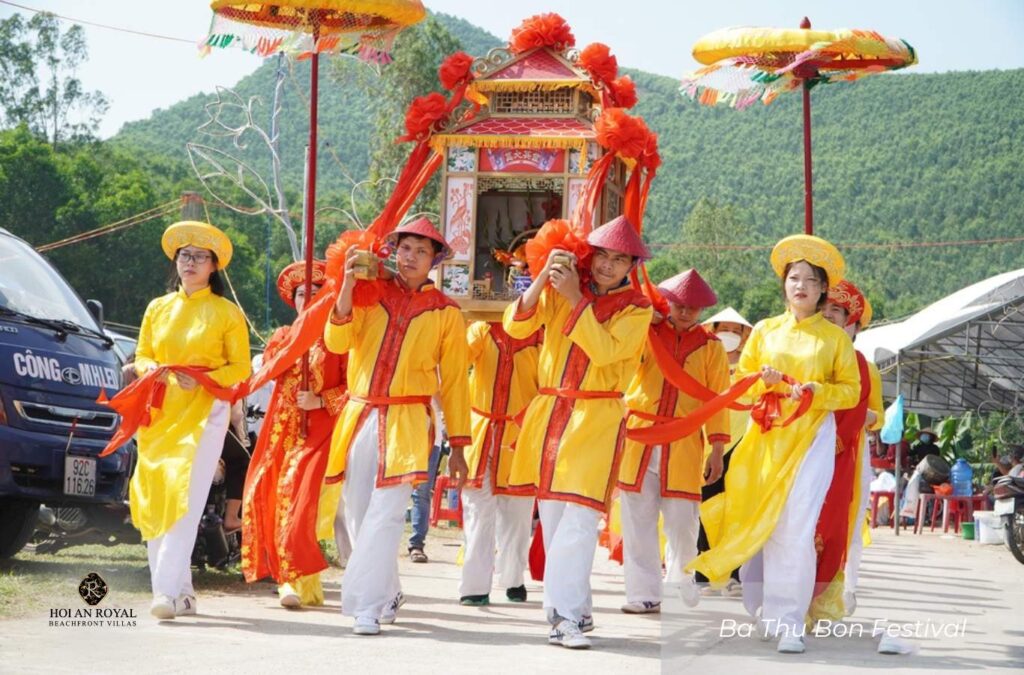
Dragon Boat Festival
The Long Chu refers to a dragon-shaped boat used historically to carry kings and emperors during royal tours.
The Long Chu Palanquin Procession Festival is held on the 15th day of the 7th lunar month, featuring the dragon boat being paraded through the streets during the festival. This event carries spiritual significance and reflects the blend of Buddhism, Taoism, and folk beliefs, praying for peace for the people.
Main activities include:
- Long Chu procession: The dragon boat is paraded through the streets and then carried to the river for burning, accompanied by prayers for peace.
- Traditional worship and rituals: Priests conduct solemn rites with ceremonial texts and traditional ceremonies.
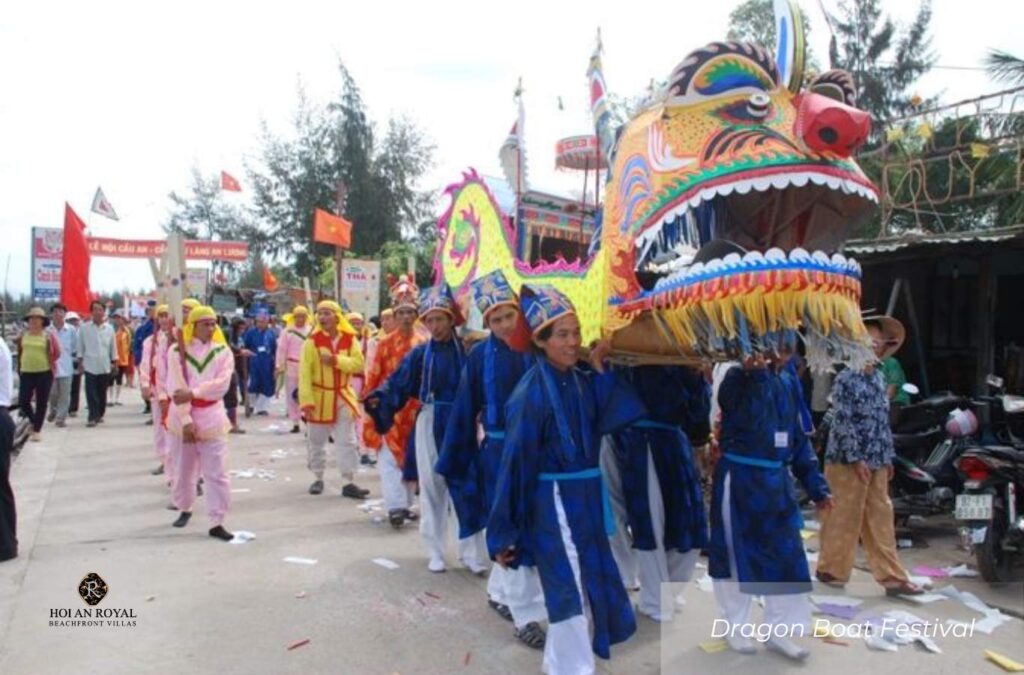
Cau Bong Festival
The Cau Bong Festival is a traditional and distinctive festival of Tra Que vegetable village, Cam Ha commune, Hoi An city, Quang Nam province, with a history of more than 400 years.
The festival is held annually on the 7th day of the first lunar month, aiming to pray for a peaceful new year, favorable weather, abundant harvests, and to express gratitude to Than Nong – the god who pioneered and protected Tra Que vegetable village.
Rituals and ceremonies of the Cau Bong Festival include:
- Early on the festival day, villagers gather at Tien Hien communal house to prepare offerings such as pink sticky rice, a rooster holding a flower in its beak, white wine, fruits, incense, candles, and other items.
- The Welcoming the Deity ceremony is solemnly held with flag bearers, palanquin procession, drums and gongs, artisans, and elders dressed in traditional costumes.
- Next are the land worship, spirit worship, and the main ceremony with a ritual text honoring the merits of Than Nong and the ancestors.
- After the ceremony, young men lower the ceremonial pole, marking the beginning of the festival activities.
Festival activities include:
- Agricultural contests such as plant care, animal husbandry, and traditional cooking competitions.
- Demonstrations of rustic dishes typical of Tra Que village like fish mint soup, Cao Lau, and Tam Huu.
- Cultural exchanges with folk games, Bai Choi singing, lion dance, and water puppetry.
The festival attracts many locals and tourists, contributing to the preservation and promotion of traditional cultural values.
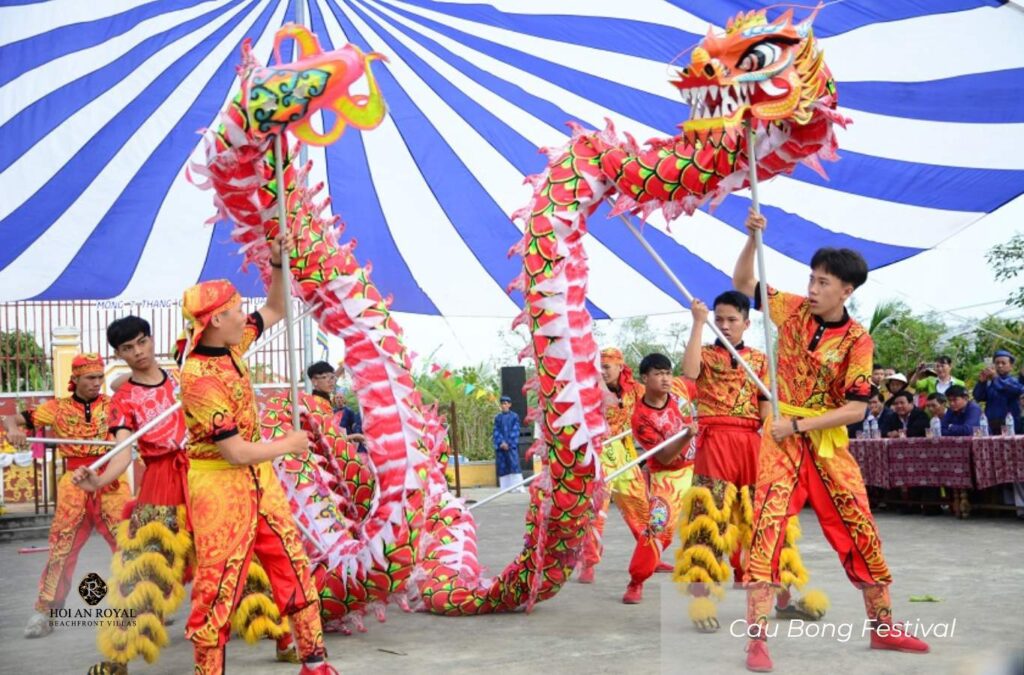
Thien Hau festival
Thien Hau festival is a traditional festival of the Hoa community and Hoa-Vietnamese people in Vietnam, especially popular in cities like Hoi An, Saigon, and Can Tho, usually held on the 23rd day of the 3rd lunar month each year.
The festival honors Bà Thiên Hậu – the sea goddess, considered the protector of fishermen and merchants at sea, helping them avoid storms and ensuring safety when going offshore.
Main activities include:
- Procession of Bà Thiên Hậu’s palanquin with traditional costumes, flags, drums, and gongs.
- Solemn worship rituals at temples and shrines dedicated to Bà Thiên Hậu.
- Folk cultural activities such as lion dance, dragon dance, and traditional art performances.
- Rituals praying for peace and good fortune for the community.
The festival is not only a religious event but also a special cultural occasion attracting many people and tourists, helping preserve the cultural traditions of the Hoa community in Vietnam.
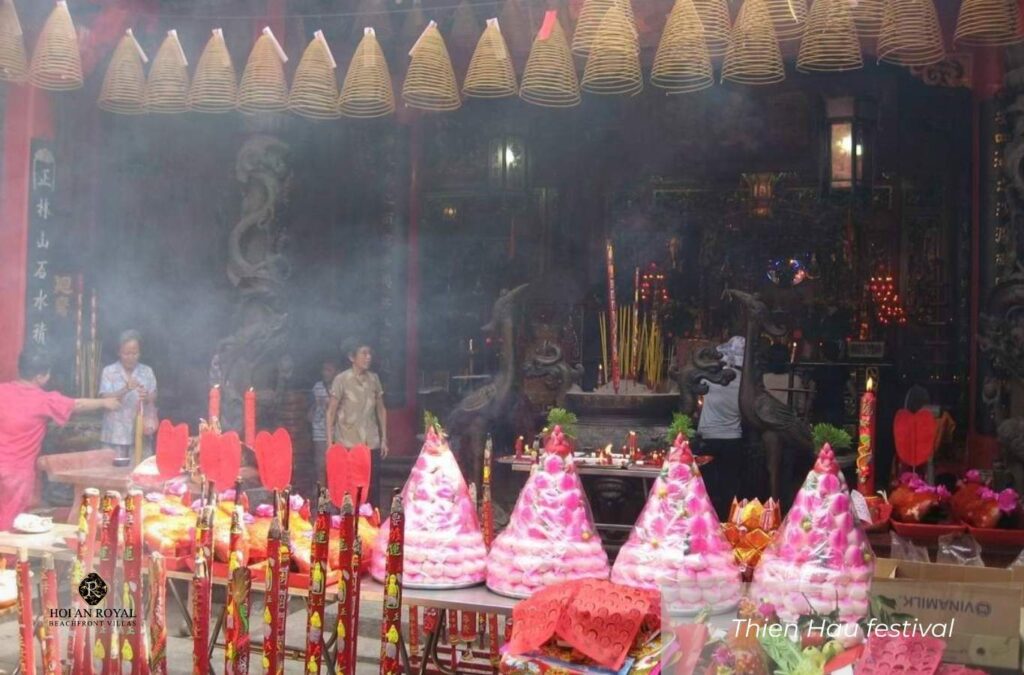
Thanh Ha Pottery Ancestral Death Anniversary
The Thanh Ha Pottery Village Festival is held annually on the 9th and 10th days of the 7th lunar month (around August) at Thanh Ha pottery village, Thanh Ha ward, Hoi An city, Quang Nam province.
The festival aims to remember and honor the ancestors who founded and passed down the traditional pottery craft over 500 years old in Thanh Ha village. It is also an occasion for villagers to express gratitude and pray for a prosperous, peaceful year and the development of the pottery trade.
Festival content includes:
Ceremonial part:
- The procession of the pottery craft’s ancestral palanquin from Lum Ba Dang shrine to Nam Dieu shrine, led by lion dance teams, eight-tone orchestra, ceremonial umbrellas, the main deity’s palanquin, and pottery incense palanquin.
- Pottery households prepare offerings and present the first pottery batch of the year to the ancestors for blessings and career growth.
- The ancestral worship ceremony is solemnly held at Nam Dieu shrine with traditional rituals honoring the ancestors’ merits.
Festival activities:
- Demonstrations of traditional handmade pottery production, from shaping, decorating, to firing, performed by Thanh Ha artisans.
- Cultural and sports events such as boat races on the Thu Bon River, tug-of-war contests, pottery crafting, clay animal molding, cooking rice in clay pots, and boat races.
- Exhibitions of traditional and modern pottery products and local specialty food spaces.
With more than 500 years of history, the festival preserves the traditional handmade pottery process, contributing to the conservation of national intangible cultural heritage. It also attracts many locals and tourists, promoting the image of Thanh Ha pottery village.
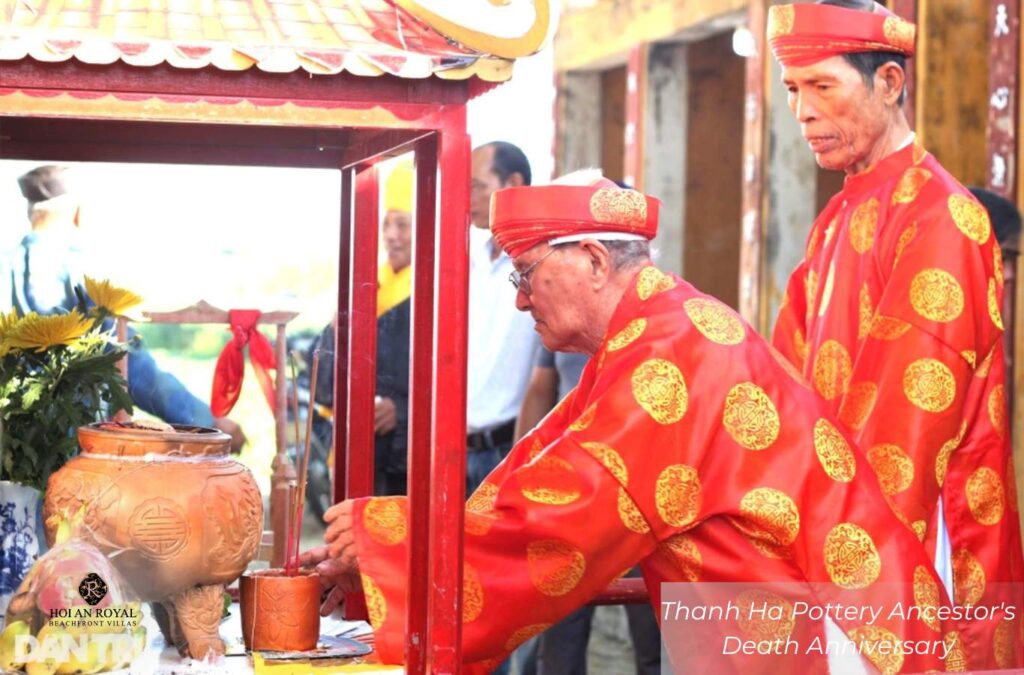
Cam Chau Field Festival
Cam Chau Field Festival is a special cultural event held at the An My vegetable village, Cam Chau ward, Hoi An, on December 28 every year.
It is an occasion for people to express gratitude to nature, pray for a bountiful harvest year, and preserve traditional values of wet rice civilization.
The festival combines solemn rituals with lively activities including rice planting, buffalo riding, clay pot cooking contests, blindfolded duck catching, Bai Choi singing, enjoying farmers’ cuisine, and displaying local products.
Besides helping preserve agricultural culture, the festival also offers attractive experiences for tourists exploring rural life in Hoi An.
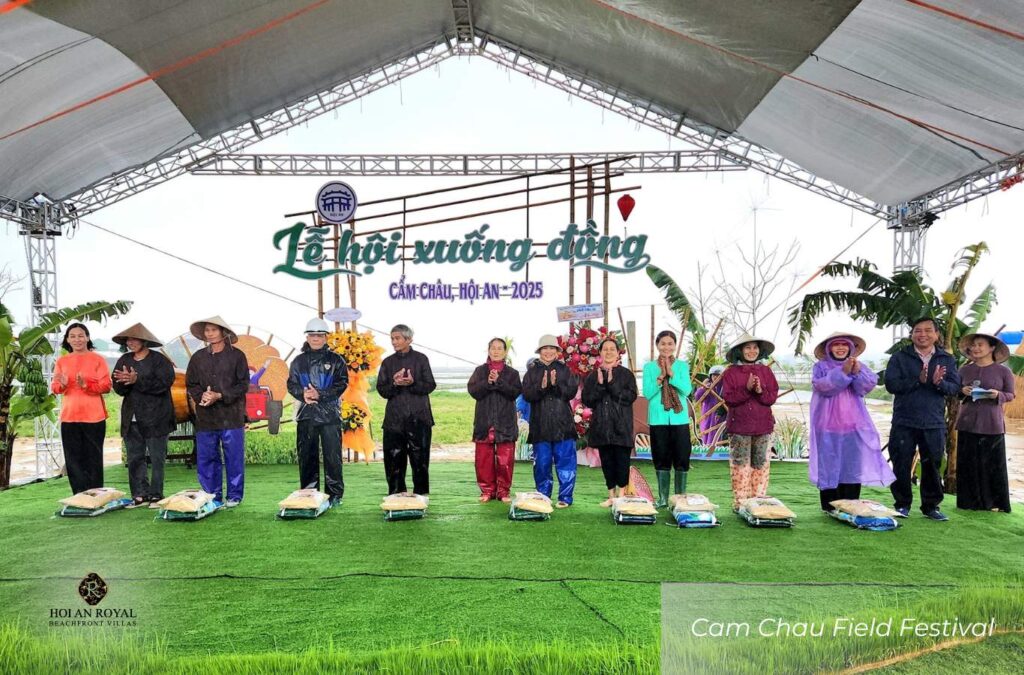
Travel Tips for Visiting Hoi An During Festival Season
Visiting Hoi An during festival season is a special and attractive experience, allowing tourists to immerse themselves in rich traditional cultural atmospheres and enjoy the shimmering beauty of the ancient town. Below are some useful tips to help you have a complete trip:
- Book accommodation and transportation early: Festival seasons are usually crowded, so you should book hotels and transport tickets in advance to avoid running out of space or facing high prices.
- Prepare appropriate clothing: Early-year evenings can be chilly, so bring a light jacket. When visiting temples, pagodas, and assembly halls, wear respectful and modest clothing to avoid causing offense.
- Limit motorbike use in the ancient town: Hoi An bans motorbikes in the ancient town area to preserve heritage sites and ensure safety. Walking, renting bicycles, or electric cars are recommended.
- Plan your sightseeing wisely: To avoid crowds, visit the ancient town early in the morning or in the late afternoon. Select festivals and activities that fit your schedule.
- Respect local culture: When participating in festivals, tourists should keep order, dress appropriately, and follow regulations at festival sites and religious places.
The above are the most distinctive festivals in Hoi An, reflecting the traditional beauty and rich spiritual life of the local people. Save these tips and don’t forget to choose Hoi An Royal Beachfront Villas as your ideal stay to make your trip even more complete and memorable.
